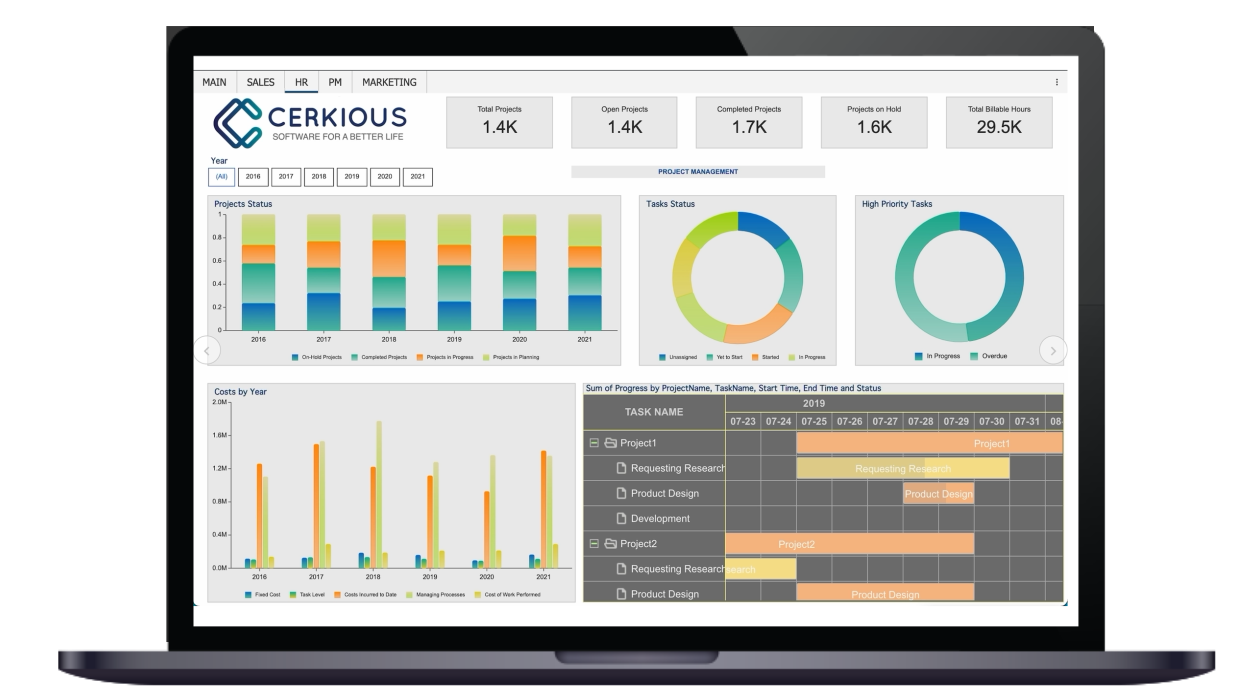Introduction
Every business is different and so is its need for the Business Intelligence (BI) system. These needs vary for different factors such as the nature of the business, the company size and type, security and regulatory concerns, the need for scalability, server availability (or uptime), backup and disaster recovery, and many others. These factors play a key role while determining the best deployment model for the BI system that suits a company (or business).
Wyn Enterprise supports a variety of deployment models that you can choose from to meet your business needs.
In this blog, we’ll review some of the commonly adopted deployment models for Wyn Enterprise. But, let’s sneak-peak into Wyn Enterprise’s architecture first as it lays the foundation for the deployment models that we’ll look at in this article.
Wyn Enterprise Architecture
The image below illustrates the basic architecture of Wyn Enterprise.

Wyn Enterprise is built using multiple services (or modules) that work together to create, store, manage and view the BI documents. This modular architecture facilitates different deployment models that can be implemented using Wyn Enterprise. The components that are critical to building a distributed (or multi-node) environment include:
-
Server: It is the core service module of Wyn Enterprise that store, manage, and control the various documents or resources namely reports, dashboards, scheduled tasks, datasets, data sources, themes, etc. It includes the user portal, administrator portal, data store, and resource plugins for reports, dashboards, schedules, and so on.
-
Worker: This service is responsible for executing resource-intensive tasks. The Server communicates with a worker to perform any calculative or resource rendering activity. Wyn Enterprise has 3 workers - Reporting Worker, Dashboard Worker, and COT Worker. While the reporting and dashboard workers perform rendering tasks of respective documents, the COT worker executes the calculation to generate the cached datasets and data models.
-
Services: These are web services that coordinate with workers to perform specific functions such as monitoring and executing scheduled tasks, working with data for real-time data and executing an analytical query on it, and fetching data from data sources.
For more information on these modules and components, please follow the user guides.
Deployment Models with Wyn Enterprise
Single Server Deployment
This is the simplest deployment model where the server along with the workers and services is installed on the same (and single) machine. It can be deployed locally, in-house, or to Cloud such as Azure and AWS. It is similar to what a typical Wyn installation looks like.
Businesses can adopt this model for less complicated installation, thus easy management and administration. It offers several advantages such as simple installation, low-cost maintenance, and lower IT overheads. This model is chosen by businesses with a defined or limited number of users, or resources on the server. We recommend this model when there is no strict need for server uptime, high performance, or backing up of resources.
Distributed (or Clustered) Deployment
In this model, one or more instances of Wyn components - Server, Worker, or Service, is/are added to the existing Wyn Enterprise installation. This is done to scale out, and improve performance, and/or overall efficiency of the system in a distributed environment.
This deployment model can meet varied business needs. Some of them are described below:
Increase Scalability
Companies such as e-commerce, SaaS, and others, often look for BI tools that can handle the increasing number of users/subscribers, concurrent resource requests, or a growing number of documents/resources on the system. Thus making Scalability an important requirement for a BI system.
Wyn Enterprise supports scalability by adding one or more workers and services to the primary installation as illustratedbelow:

Check out the documentation to learn how to deploy remote workers and services with Wyn Enterprise for an efficient and high-performing system when the organization/business is growing bigger.
Ensure High Server Availablity
Several businesses or industries such as the Stock Market, Flight/Airline, Service, Hospital, or Data centers, are always ON and thus demand the system to have 99.9% uptime. That is, they need the system to be available always, and have little to no downtime.
Wyn Enterprise supports building a High Availability system by distributing server components across distributed nodes. The servers are synchronized in such a manner that if one goes down, the other is up to handle the user requests. This coordination between the servers is managed by standard load balancing software (or tool) such as Nginx, HAProxy, etc. as illustrated below:

For information, see Configuring the active-active cluster deployment in the documentation.
Building a Backup for Disaster Recovery
To prevent the situation of system unavailability and document loss such as a system failure, organizations often look to create backups for the information stored on the system. Creating a backup manually is not effective when there are many documents to handle or frequent updates to the system.
Wyn Enterprise offers to build a backup system by deploying one or more server components as a Backup Server and using a load balancing tool to make a switch. The backup server in this case is typically a proxy and is transparent to the users. When the primary server is DOWN or unavailable, the load balancer can be configured to redirect the requests to the backup server till the primary server is UP again. The backup server uses the same data store that is used by the primary server. Thus, the user gets uninterrupted services.
The typical structure of a backup server implementation in Wyn Enterprise appears as shown below:

It implementation of a Backup system is similar to a High Availability system. However, in a backup system, the secondary server remains dormant till the primary server is operational, while in an HA system all the servers (primary or secondary) are active simultaneously.
Check deploying Server as a Backup server to know more about it.
Hybrid Deployment
This is a more complex deployment scenario where the components - Server, Workers, and Services are combined to achieve the business scenarios described above and many others.
For example, a backup system with a scaled-out multi-node deployment. This is implemented by deploying a backup server and multiple worker services to the primary server as shown below:

Conclusion
Deployment models supported by Wyn Enterprise can meet most of the business needs that a company seeks in a BI tool and are super easy to implement (or install). Try them out for your business scenario and share your experience with us.






























